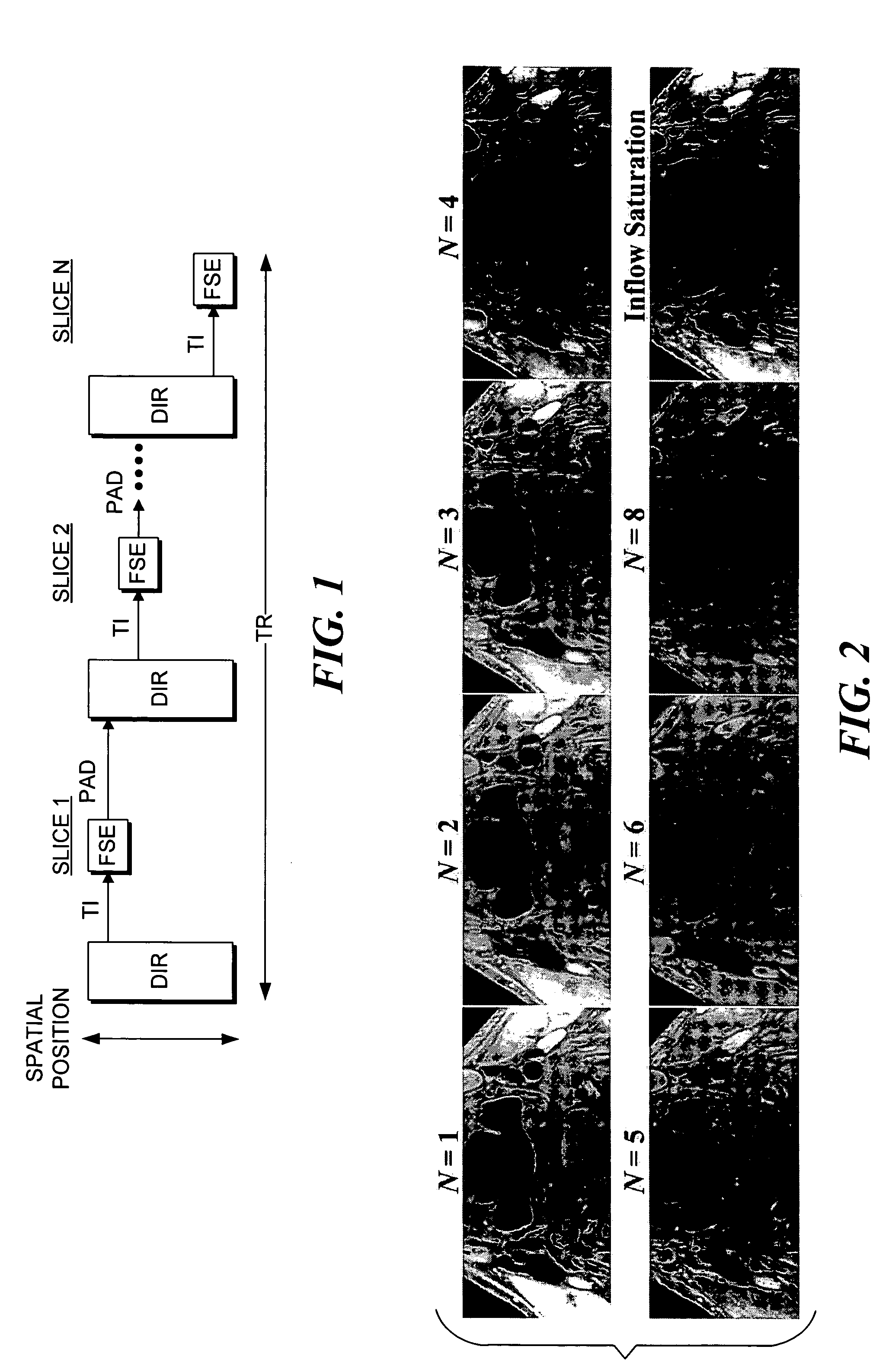Multi-slice double inversion-recovery black-blood imaging with simultaneous slice re-inversion
- Summary
- Abstract
- Description
- Claims
- Application Information
AI Technical Summary
Benefits of technology
Problems solved by technology
Method used
Image
Examples
Embodiment Construction
Principle of Multi-Slice DIR Acquisition
[0023]A schematic functional diagram of a multi-slice DIR-FSE sequence in accord with the novel method described herein is shown in FIG. 1. In FIG. 1, slices are imaged sequentially within the TR, as shown by FSE readout blocks. A DIR preparation is executed before read out of each slice. Each DIR block includes a slab-selective inversion applied to an entire slice pack. The proper timing of the sequence is controlled by a post-acquisition delay (PAD), which allows for coincidence of the zero-crossing point of blood (see Eq. [1] below) and the start of an FSE readout. The general idea of this method is to replace a slice-selective inversion in the DIR preparation by a slab-selective one, which is applied to an entire slab of slices to be imaged within a TR. The DIR sequence is repeated for each slice, while a shortened TI provides imaging of several slices per TR. A predefined post-acquisition delay (referred to as “PAD” in FIG. 1) is used aft...
PUM
 Login to View More
Login to View More Abstract
Description
Claims
Application Information
 Login to View More
Login to View More - R&D
- Intellectual Property
- Life Sciences
- Materials
- Tech Scout
- Unparalleled Data Quality
- Higher Quality Content
- 60% Fewer Hallucinations
Browse by: Latest US Patents, China's latest patents, Technical Efficacy Thesaurus, Application Domain, Technology Topic, Popular Technical Reports.
© 2025 PatSnap. All rights reserved.Legal|Privacy policy|Modern Slavery Act Transparency Statement|Sitemap|About US| Contact US: help@patsnap.com



